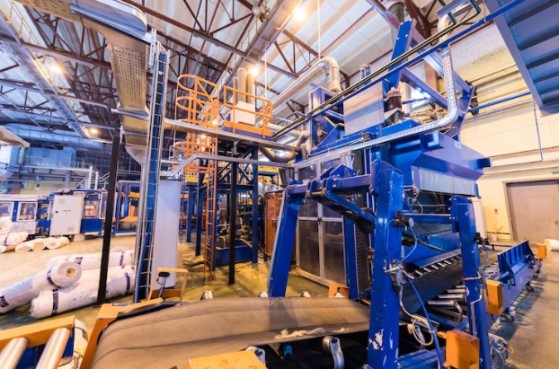In the ever-evolving panorama of cloth dealing with and logistics, innovation is the driving pressure behind multiplied efficiency and improved productivity. As industries keep growing and adapt to changing needs, the need for innovative answers becomes increasingly obtrusive.
These structures have served their reason properly, however as industries expand and warehousing turns into a greater complex, the restrictions of horizontal conveyors have come to be more and more apparent.
To deal with these barriers and offer greater green answers, the conveyor enterprise has undergone an extensive transformation, giving upward thrust to the vertical revolution.
A Game-Changer in Material Handling
The conventional horizontal conveyor paradigm was superb for moving items on a single aircraft however it struggled to successfully manage the multi-degree necessities of contemporary facilities.
This is where vertical conveyor structures shine. These modern structures are specifically designed to move goods vertically, frequently across tremendous heights, making them beneficial in various industries, from manufacturing to e-commerce.
Key Benefits of Vertical Conveyor Systems
Efficient Material Flow:
Efficient Material Flow, facilitated by versatile systems like sidewall conveyor belts, ensures seamless movement of goods between different levels of a facility, reducing the need for manual handling and minimizing the risk of damage or errors.
Space Optimization:
One of the number one benefits of vertical conveyor structures is their ability to maximize area usage. In centers where the ground area is constrained or pricey, these systems offer an efficient manner to utilize vertical actual estate, allowing the garage of goods at more than one tier.
Versatility:
Conveyor structures are fantastically versatile and adaptable to a huge range of materials and applications. Whether you want to move small components, bulk gadgets, or specialized goods, those systems can be tailor-made to fulfill your unique wishes.
Customization:
Modern vertical conveyors are designed with customization in thoughts. From spiral conveyors to reciprocating vertical lift conveyors, the options are plentiful. This flexibility lets companies put into effect systems that align perfectly with their unique requirements.
Enhanced Safety:
Automation in cloth management through vertical conveyor structures reduces the threat of accidents and injuries associated with manual lifting and delivery. This not simplest improves administrative center safety but also contributes to operational reliability.
Improved Efficiency:
Vertical conveyor structures streamline fabric delivery, notably decreasing the time and effort required for these obligations. They enable companies to acquire quicker throughput prices, meet purchaser needs greater efficiently, and in the long run, enhance their bottom line.
Applications Across Industries
The versatility and efficiency of vertical conveyor structures have made them useful across an extensive spectrum of industries:
Automotive:
In the automobile enterprise, vertical conveyors efficiently transport elements and components between exclusive tiers of meeting lines, contributing to stepped-forward manufacturing performance and cost-effectiveness.
Retail and E-commerce:
E-commerce distribution facilities depend on vertical conveyors to optimize order achievement strategies, allowing faster and greater correct deliveries, even all through top calls for.
Pharmaceuticals:
Vertical conveyor systems play a crucial function in pharmaceutical manufacturing, ensuring the safe and particular handling of sensitive tablets and medicines, adhering to strict first-class requirements.
Food and Beverage:
Food processing plants use vertical conveyors to move items among various production stages, retaining hygiene and first-class requirements at some point in the system.
Aerospace:
Vertical conveyors assist with the green motion of plane additives within manufacturing centers, contributing to on-time delivery and price financial savings.
Automation and Integration
A full-size element of the vertical revolution is the integration of the automation era with vertical conveyor structures. These structures may be seamlessly integrated into automated warehouse and manufacturing procedures, taking into account the right manipulation and coordination of cloth delivery. Automation reduces labor charges and minimizes the danger of human mistakes, similarly enhancing performance.
Energy Efficiency and Sustainability
In cutting-edge international, sustainability is a pinnacle of precedence for many agencies. Innovative vertical conveyor belt systems are designed with strength-efficient technology in mind. Some models have characteristic regenerative drives that seize and reuse strength at some stage in downward load movement, decreasing power charges and environmental effects. As sustainability continues to benefit, vertical conveyor systems are aligning with those values by becoming extra electricity-efficient and environmentally pleasant.
Enhanced Safety Measures
Safety is paramount in material management, and modern vertical conveyor systems prioritize safety through various mechanisms. These systems are geared up with superior safety capabilities which include emergency prevent buttons, protection sensors, and fail-safe mechanisms. This ensures that both operators and goods are covered at some stage in operation. Additionally, the automation of cloth coping with obligations reduces the hazard of injuries associated with manual lifting and the sporting of heavy gadgets.

Customization and Specialized Applications
The versatility of vertical conveyor structures extends to specialized programs. Various types of vertical conveyors cater to unique needs:
Vertical Spiral Conveyors:
Ideal for applications requiring a continuous flow of substances, along with bottling plants and distribution facilities.
Reciprocating Vertical Lift Conveyors:
Designed for shifting heavy hundreds vertically, usually used in automobile manufacturing and big-scale distribution centers.
Continuous Vertical Conveyors:
Geared towards excessive-velocity, high-throughput programs, often observed in e-commerce order fulfillment centers.
Automated Storage and Retrieval Systems (AS/RS):
AS/RS answers integrate vertical conveyors with robotic generation to successfully keep and retrieve goods in high-bay warehouses.
Future Trends and Innovations
The vertical revolution in conveyor systems is an ongoing method, and future innovations are predicted to similarly decorate efficiency and adaptability. Real-time records monitoring and predictive maintenance will play a critical position in ensuring the reliability and uptime of those structures. The integration of synthetic intelligence (AI) and gadget mastering will allow predictive analytics, optimizing cloth glide, and useful resource allocation.
In Conclusion
The vertical revolution in conveyor systems represents a brilliant transformation in material handling and transport efficiency. These revolutionary structures offer space optimization, performance, versatility, and more desirable safety across a wide variety of industries. With automation, strength efficiency, and specialized programs, they are poised to fulfill the evolving needs of modern-day groups.